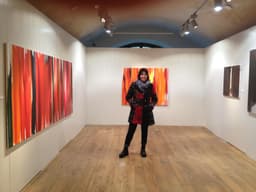
Mark Rothko
@mark-rothko
Mark Rothko: America's Master of Color and Emotion
Mark Rothko stands as one of the most influential American artists of the twentieth century, fundamentally reshaping how we understand abstract art and emotional expression through color. Born in Russia in 1903 and immigrating to the United States as a child, Rothko eventually became a central figure in the Abstract Expressionist movement that revolutionized post-war American art.
Throughout his career, Rothko moved beyond rigid geometric abstraction toward something deeply personal and transcendent. By the 1950s, he had developed his iconic style of floating rectangular color fields that seem to vibrate with internal energy. These luminous blocks of pigment, often featuring warm ochres against deep crimsons or soft oranges suspended above purples, created an almost spiritual experience for viewers. Rather than depicting recognizable subjects, Rothko believed color itself could communicate profound human emotions and universal truths.
His most celebrated works include the monumental murals created for the Seagram Building in New York City and the stunning Houston Chapel installation, where viewers encounter his meditative abstractions in an intimate, purpose-built space. These installations transformed art into an immersive, transformative experience. Rothko's commitment to scale was deliberate—he wanted viewers standing before his paintings to feel enveloped by color, creating an almost religious encounter with art itself.
Rothko's legacy fundamentally altered contemporary art's trajectory. He proved that abstraction could be profoundly emotional and that color alone could carry philosophical weight. His influence extends far beyond visual art, affecting music, literature, and design. Though he struggled with depression throughout his life and died in 1970, his paintings continue captivating audiences worldwide, demonstrating art's power to transcend language and touch the human soul through pure color and form.